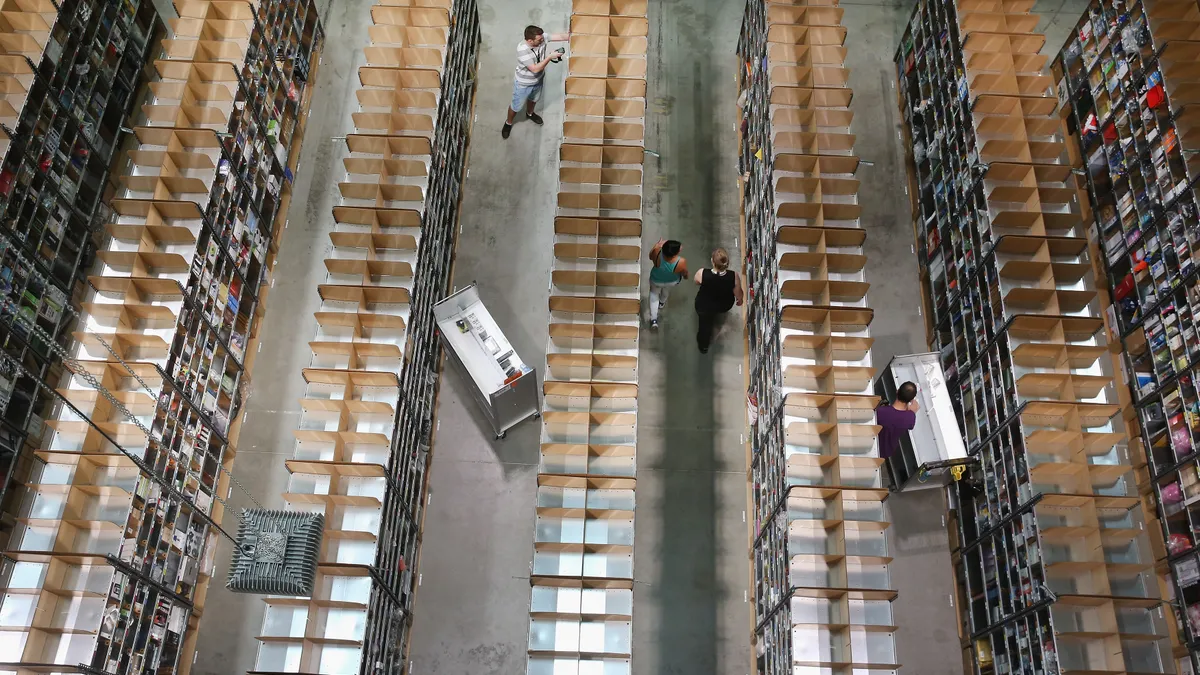Dive Brief:
- A recent survey in the latest annual MHI Industry Report found that 54% of respondents plan to increase investment in inventory and network optimization technologies. This, along with cloud technology (also with 54% of respondents), topped the list for investment plans.
- Inventory and network optimization tools also saw the largest YoY jump in companies reporting the technology as "in-use today," with 45% of companies falling into that category, up from 40% last year.
- "Now there's a need to be able to say, 'How can I began to not only sense when those demand patterns are going to change, but how can I also help to shape and adjust to those?'" Randy Bradley, an associate professor of information systems and supply chain management at the University of Tennessee, said during a webinar panel at ProMat discussing the release of the MHI report.
More companies plan inventory, network optimization in coming years
Dive Insight:
The focus on inventory and network optimization tools is not necessarily anything new. "According to the survey, inventory and network optimization tools rank as the most widely used and most likely to deliver a competitive advantage," according to the 2015 MHI Annual report, which found that 35% of companies were using the tools more than half a decade ago.
But the most recent figures do show that the companies that were planning to make adoptions years ago have made moves to implement the technology, while also underscoring the digital transformation that has been made a necessity as a result of the pandemic.
Inventory and network optimization tools encompass a broad category of applications covering logistics and operations, such as route planning, flow path analysis and safety stock decisions. But one of the main uses for predictive analytics in the near future will be demand forecasting, according to the most recent MHI report. It found that 44% of respondents will be using analytics for that purpose over the next one to two years.
The report also found that 40% of respondents will be using predictive analytics for supply planning, while 35% will be using it for inventory optimization.
"Early in the pandemic, Ochsner Health developed a new inventory analytics and visualization tool that spotlighted [personal protective equipment] inventory levels throughout its entire system," the MHI report offered as a case study. "It provided valuable insights across the supply chain and enabled predictive forecasting of stockouts, helping Ochsner to manage its replenishment cycle more effectively."
The pandemic has been partially defined by its dramatic impact on consumer demand, which companies have highlighted as being one of their biggest supply chain bottlenecks. Companies took steps to tweak their models to better forecast during the pandemic, including new variables like Google Trends data and COVID-19 case numbers.
But many companies have also decided that holding more inventory is the best way to avoid missed sales at a time when demand is highly volatile.
The shift in e-commerce sales has especially pushed companies to pivot their networks to be able to keep up with demand coming from end consumers rather than retailers.
"I'm just barely keeping up at this point," Annette Danek-Akey, the executive vice president of supply chain at Penguin Random House, said during the same ProMat panel last week.
Danek-Akey said the shift to e-commerce makes a company's inventory allocation across its network even more important, and tools like order management systems are vital for handling the flow of orders.
This story was first published in our weekly newsletter, Supply Chain Dive: Operations. Sign up here.















